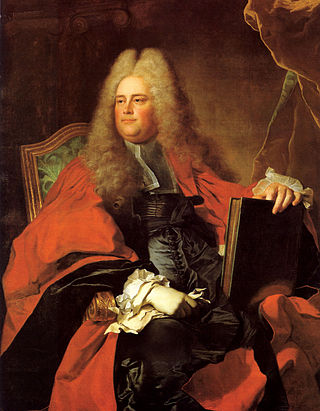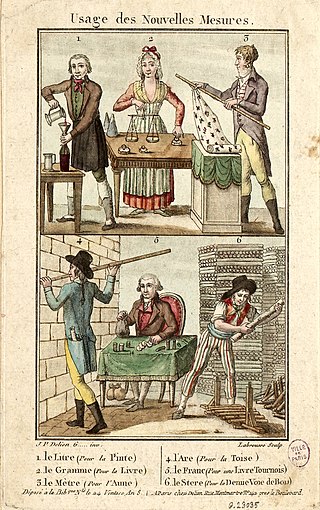
Encyclopédie, ou dictionnaire raisonné des sciences, des arts et des métiers, better known as Encyclopédie, was a general encyclopedia published in France between 1751 and 1772, with later supplements, revised editions, and translations. It had many writers, known as the Encyclopédistes. It was edited by Denis Diderot and, until 1759, co-edited by Jean le Rond d'Alembert.

The Gulf of Lion or Gulf of Lions is a wide embayment of the Mediterranean coastline of Catalonia in Spain with Languedoc-Roussillon and Provence in France, extending from Begur in the west to Toulon in the east.

In France under the Ancien Régime, the lit de justice was a particular formal session of the Parlement of Paris, under the presidency of the King of France, for the compulsory registration of the royal edicts and to impose his sovereignty. It was named thus because the king would sit on a throne, under a baldachin. In the Middle Ages, not every appearance of the King of France in parlement occasioned a formal lit de justice.

Guillaume II de Lamoignon, seigneur de Blancmesnil et de Malesherbes was a French magistrate.

César Chesneau, sieur Dumarsais or Du Marsais was a French philosophe, grammarian and contributor to the Encyclopédie ou Dictionnaire raisonné des sciences, des arts et des métiers.
A malletier is, in French, literally a trunk-maker, or manufacturer of luggage and suitcases..

Jean-Rodolphe Perronet was a French architect and structural engineer known for his many stone arch bridges. His best-known work is the Pont de la Concorde (1787).
The Great Ordinance of Marine of August 1681, also called the marine code, is a royal ordinance drafted under the reign of Louis XIV, which comprehensively codifies practices in maritime transport (shipping). Inspired by the customs and statutes of the United Provinces, it was established under the administration of Colbert.
Frédéric-Adolphe-Maximilien-Gustave Salvemini de Castillon, anglicized as Frederick Salvemini de Castillon, was a Swiss-born music theorist.

Bernard Rosenblum (1927–2007) was a Master Craftsman Gilder and Art Restorer of the National Museums, the successor of the workshop Gainerie Bettenfeld. He was awarded the Political deportation and internment medal as well as Commander of the Order of Civic Education.

The traditional French units of measurement prior to metrication were established under Charlemagne during the Carolingian Renaissance. Based on contemporary Byzantine and ancient Roman measures, the system established some consistency across his empire but, after his death, the empire fragmented and subsequent rulers and various localities introduced their own variants. Some of Charlemagne's units, such as the king's foot remained virtually unchanged for about a thousand years, while others important to commerce—such as the French ell used for cloth and the French pound used for amounts—varied dramatically from locality to locality. By the 18th century, the number of units of measure had grown to the extent that it was almost impossible to keep track of them and one of the major legacies of the French Revolution was the dramatic rationalization of measures as the new metric system. The change was extremely unpopular, however, and a metricized version of the traditional units—the mesures usuelles—had to be brought back into use for several decades.

The House of Enlightenment, Denis Diderot or La Maison des Lumières Denis Diderot (MLDD) is a museum dedicated to Denis Diderot, the French philosopher, writer, and art critic, as well as his Encyclopédie, ou Dictionnaire raisonné des sciences, des arts et des métiers. It is housed in the Hotel du Breuil de Saint Germain, located in Langres, built in the sixteenth century and rebuilt in the eighteenth century.
Events from the year 1751 in France.

Bonaventure Louis Prévost (Paris, 11 March 1733 – 19 March 1816
Jean-Cyrille Rigaud was a French poet, playwright and doctor from Occitania.

Henri Fouquet was an 18th-century French physician.
Laurent Durand was an 18th-century French publisher active in the Age of Enlightenment. His shop was established rue Saint-Jacques under the sign Saint Landry & du griffon.
Philippe Macquer was a French historian and lawyer. His brother was the chemist Pierre Joseph Macquer.
Jacques Longueval was a French Jesuit priest, theologian, scholar and historian of the Catholic Church in France.
Sophie Chevigny, known professionally as Mlle Chevigny was an 18th century French ballet dancer and mime who performed as a principal dancer at the Opéra de Paris.












